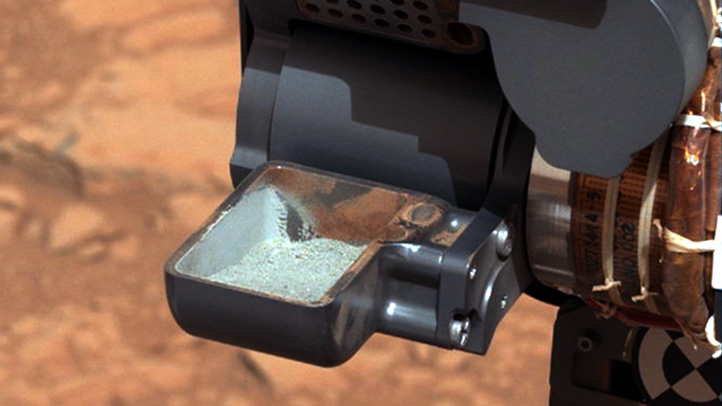Scientists studying a powdery sample from a rock into which rover Curiosity drilled one month ago announced Tuesday that the analysis revealed conditions once suited for ancient life on Mars.
The team analyzed crushed rock bored from flat bedrock near the site at which Curiosity landed about seven months ago. The rover is equipped with an on-board laboratory to analyze the powder, which contained key chemical ingredients needed for life, scientists said Tuesday.
"A fundamental question for this mission is whether Mars could have supported a habitable environment," said Michael Meyer, lead scientist for NASA's Mars Exploration Program. "From what we know now, the answer is yes."
Curiosity crossed an ancient streambed to get to the flat bedrock in the so-called Yellowknife Bay area, which hinted that water was present at one point in that area. More clues pointing to the possibility that Mars could have supported microbes were discovered in the fine-grain mudstone and clay material of the rock.
The analysis suggested an ancient wet environment instead of harsh oxidizing and acidic environments elsewhere on the planet.
"This is probably the only definitively habitable environment on Mars that we've recorded," said David Blake, principal investigator for Curiosity's Chemistry and Mineralogy investigation.
Scientists have already used the on-board laboratory's equipment to test Martian soil samples, which revealed a "complex chemistry" on the planet's surface, but no major surprises. An analysis detected water, sulfur, chlorine substances and other chemicals, but no definitive signs of life.
More samples from Gale Crater (powder sample pictured, right) will be analyzed during the next two years as the rover rolls toward Mount Sharp. Curiosity is likely to remain in Yellowknife Bay for a few more weeks before continuing its journey.
"We have characterized a very ancient, but strangely new 'gray Mars' where conditions once were favorable for life," said John Grotzinger, Mars Science Laboratory project scientist at the California Institute of Technology. "Curiosity is on a mission of discovery and exploration, and as a team we feel there are many more exciting discoveries ahead of us in the months and years to come."
The first few months on Mars have primarily been used to test the rover's complex equipment. The rover has sent back stunning images of the Martian surface, checked in on Foursquare and left wheel tracks on Mars during its test drive.
Photo Credit: NASA/JPL-Caltech/Cornell/MSSS